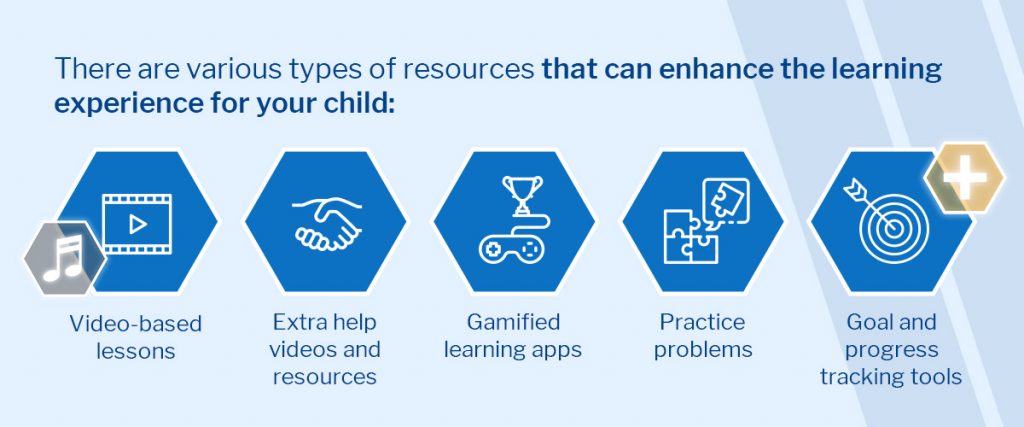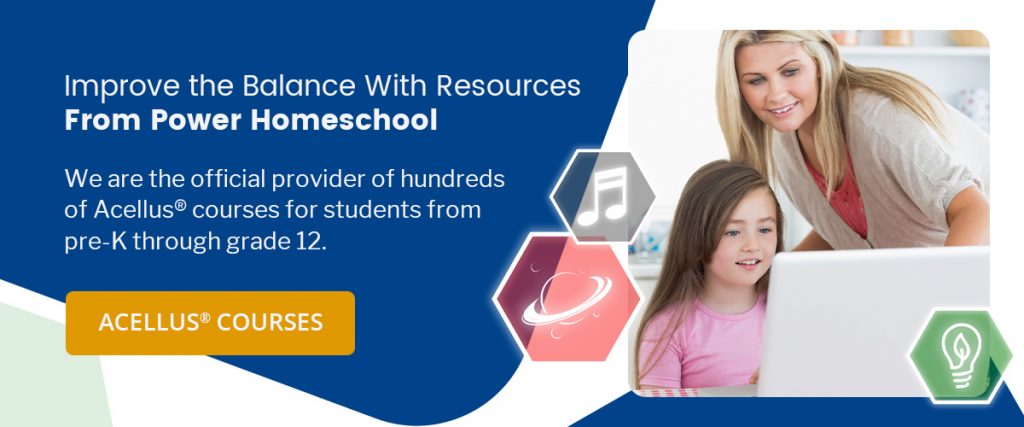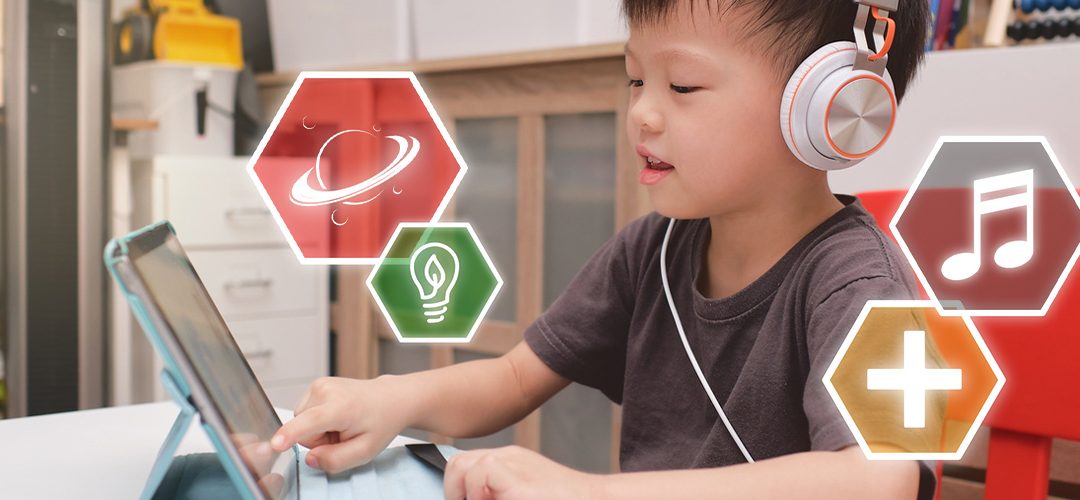It’s important to create a healthy balance between school activities and technology use. While some believe it should be cut out completely to avoid distractions, technology offers various benefits for children in the homeschooling environment.
It is helpful to look for ways to use technology for educational purposes while creating healthy usage habits so you and your child can maximize the learning experience. This guide explores the benefits of screen time for students and explains how to create a healthier balance in five steps.
What Are the Effects of Screen Time on Students?
There are many misconceptions surrounding technology use in the learning environment. Some believe it distracts students, while others believe it can replace the teacher role. Technology can enhance academic experiences by making learning fun and interactive and allowing for real-time student monitoring. It can also assist teachers in helping children understand complex topics.
Some of the top benefits of screen time for homeschooling purposes include:
- Improves collaboration: When siblings learn in the same environment and use technology, they are tempted to help each other figure things out, improving their collaboration skills. They can also collaborate with peers using tools like Zoom and Google Meet.
- Caters to different learning styles: Every student has a learning style that helps them retain information best, whether it’s visual learning or hands-on activities. Video demonstrations, live lessons, podcasts and e-books are digital resources that enhance the learning experience.
- Creates an engaging learning environment: Technology and digital tools encourage active participation because they are more interactive than traditional resources. For example, educational game apps may generate more excitement and reaction than paper quizzes.
- Prepares children for future digital needs: Using technology and digital tools like PowerPoint or Google Slides in daily school life helps ensure your children are proficient users by the time they attend university and enter a technology-reliant workforce.
How to Create a Healthier Balance of Screen Time
The above benefits are only possible when you implement the right strategies. Here are five ways to balance screen time while homeschooling online.
1. Use Educational Programs
Incorporate educational content into your child’s school day. Many of these can come from supplemental homeschool programs that cater to different learning styles. There are various types of resources that can enhance the learning experience for your child:

- Video-based lessons: These can be live or recorded lessons offered by homeschool programs. This resource allows students to learn independently from an expert in the field.
- Extra help videos and resources: Some homeschool curricula may offer additional in-depth videos and resources to help students better understand complex topics.
- Gamified learning apps: Fun educational apps make tests fun and engaging for students to work through. These tools can also support memory retention by creating memorable experiences.
- Practice problems: After lessons, homeschool programs can prompt students to solve practice problems to gauge their understanding of a topic before moving them to the next. This ensures students understand the subject matter before moving on.
- Goal and progress tracking tools: Goal and progress tools help students log and track their progress in meeting academic goals, keeping them on pace with where they need to be.
Consider mixing these digital resources into your child’s typical school day to create a blend of traditional and modern learning techniques. Switching up their school day tasks to rotate normal lessons, written activities, extra help videos and gamified learning apps can help your child stay engaged and on task throughout the day.
2. Monitor Screen Time and Educational Progress
Parental involvement can help monitor screen time and educational progress, especially when your child uses technology for education. Some homeschool programs offer live monitor tools for parents to review their child’s progress on school work and goals.
For instance, it may provide detailed score reports and an overview of finishing a course. With this information, parents know what they should focus more on to help their child get back on track.
3. Encourage Physical Activity and Hobby Breaks
Your child needs to learn how to reduce screen time as a student to pursue more valuable activities in life. Encourage them to have exciting experiences during their breaks to discourage them from spending most of their day staring at screens. Some ideas include physical activity breaks, whether playing in the backyard or walking to the park. It can even involve a nature hike or playing sports. Physical activities promote physical health and opportunities for social interactions.
You can also encourage your children to try new things to discover a hobby they’ll enjoy during breaks. Some examples include reading, crafts, music, crocheting or arts. Any of these can help your child enhance important life skills like critical thinking, perseverance, patience and creativity.
4. Set Time Limits for Noneducational Technology Use
Set time limits and planned breaks for social media or video game breaks during the school day to reduce the chances of your child secretly using their phones when they should be working. They may have an easier time focusing during school times when they know they can use their devices in a few hours.
Adjust screen time based on the types of technology they use the most. For example, children who like playing online games or watching TV might benefit from one-hour technology breaks, while those who like browsing social media or watching videos can get 30-minute breaks.
Parental control tools are another valuable asset for helping parents manage noneducational technology use. They block inappropriate content and set screen time limits.
5. Incorporate Hands-on Learning Activities
It’s easy to let children watch videos showing them how to solve math problems or make art and science projects. However, hands-on activities give children opportunities to try things themselves and learn from experience. This may help them remember better for tests and assignments because they are more engaged.
Allow your child to create objects with clay, solve math problems on paper and make electrical circuits while watching these educational videos so they know how to live in the real world.
Improve the Balance With Resources From Power Homeschool
Are you looking for supplemental homeschool learning resources that can help you balance educational technology with traditional homeschooling methods? Power Homeschool is an online homeschool curriculum with valuable resources for helping homeschool parents enhance the learning experience. We are the official provider of hundreds of Acellus® courses for students from pre-K through grade 12.
We provide parent tools that allow you to live monitor your student progress and a student interface for video-based lessons, extra help videos, practice problems and goal progress features. Browse our Acellus® courses today to get started.



